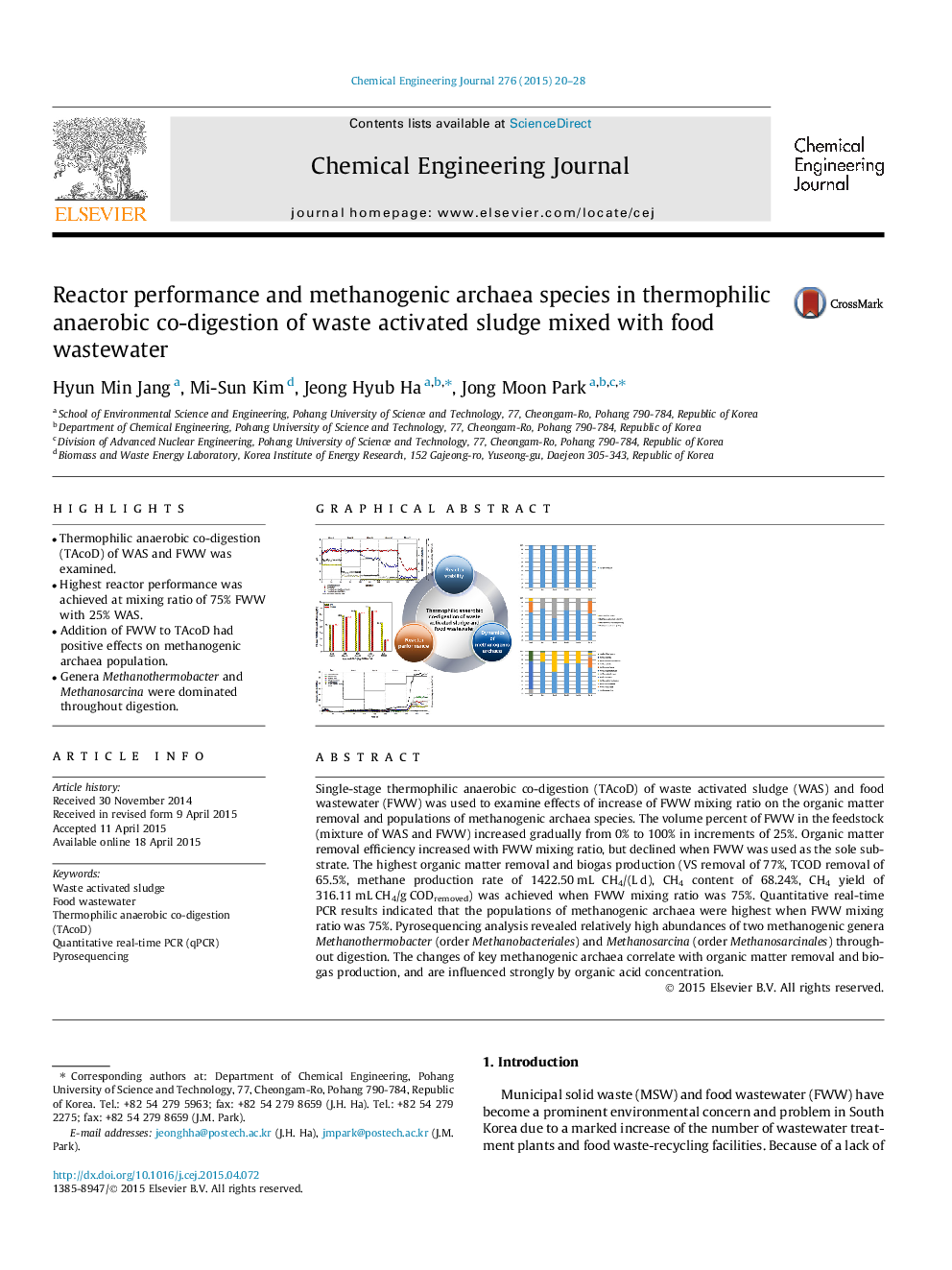| Article ID | Journal | Published Year | Pages | File Type |
|---|---|---|---|---|
| 146210 | Chemical Engineering Journal | 2015 | 9 Pages |
•Thermophilic anaerobic co-digestion (TAcoD) of WAS and FWW was examined.•Highest reactor performance was achieved at mixing ratio of 75% FWW with 25% WAS.•Addition of FWW to TAcoD had positive effects on methanogenic archaea population.•Genera Methanothermobacter and Methanosarcina were dominated throughout digestion.
Single-stage thermophilic anaerobic co-digestion (TAcoD) of waste activated sludge (WAS) and food wastewater (FWW) was used to examine effects of increase of FWW mixing ratio on the organic matter removal and populations of methanogenic archaea species. The volume percent of FWW in the feedstock (mixture of WAS and FWW) increased gradually from 0% to 100% in increments of 25%. Organic matter removal efficiency increased with FWW mixing ratio, but declined when FWW was used as the sole substrate. The highest organic matter removal and biogas production (VS removal of 77%, TCOD removal of 65.5%, methane production rate of 1422.50 mL CH4/(L d), CH4 content of 68.24%, CH4 yield of 316.11 mL CH4/g CODremoved) was achieved when FWW mixing ratio was 75%. Quantitative real-time PCR results indicated that the populations of methanogenic archaea were highest when FWW mixing ratio was 75%. Pyrosequencing analysis revealed relatively high abundances of two methanogenic genera Methanothermobacter (order Methanobacteriales) and Methanosarcina (order Methanosarcinales) throughout digestion. The changes of key methanogenic archaea correlate with organic matter removal and biogas production, and are influenced strongly by organic acid concentration.
Graphical abstractFigure optionsDownload full-size imageDownload as PowerPoint slide
